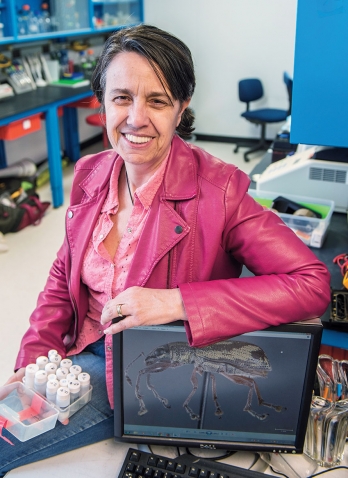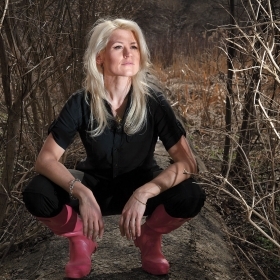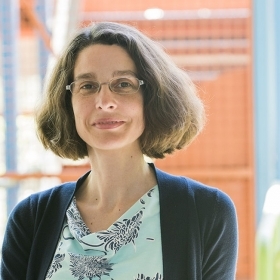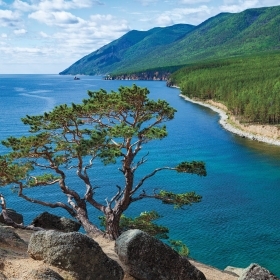Photo by Richard Howard
Andrea Sequeira is perhaps most at home in the field, tromping up and down volcanoes or trudging through vegetation while doggedly hunting for answers to big evolutionary questions such as, “How do new species form?” And it was in the Galápagos Islands, while trying to answer this very question by studying small, flightless beetles called weevils that she stumbled on an evolutionary mystery: an invasive weevil that has, against all odds, outcompeted the native weevils to flourish in its new environment.
“If a population has a lot of genetic variation, that’s great, because it’s like packing a suitcase with lots of different clothing—you have the little black dress and you have the hiking boots, so if anything changes in the environment, and natural selection hits, you’re going to be ready,” Sequeira explains. “The conundrum is that this invasive weevil population shouldn’t have a lot of variation because it started from a very small number of adventurous individuals. So how is it that this introduced species is taking over?”
To address this question, Sequeira, a professor of biological sciences, and her students made several trips to the Galápagos, island hopping on a slow, motorized sailboat called El Pirata. Once there, they began searching for weevils … or rather, searching for bushes and trees where the weevils live. Upon locating a bush, they placed a square white “beating sheet” underneath, found a sturdy stick, and hit the bush until any unsuspecting weevils had fallen out, rounding them up for the long trip back to Wellesley.
In the lab, Sequeira and her students sequenced individual weevil genes, looking for spots of variation in the DNA. They also sequenced microsatellites—small, repetitive stretches of DNA that tend to have higher mutation rates than other parts of the genetic code. Ultimately, “signatures” of variation and mutations revealed that the invasive weevils overcame a lack of genetic variation with brute reproductive force: They drastically increased their population size, while expanding their geographic range. “Population number and genetic variation are related,” Sequeira explains. “What we came to understand is you have more chances for more mutations when you have more organisms.”
Sequeira didn’t necessarily expect to become an evolutionary biologist, but as a self-described “outside kid,” she was continuously captivated by the diversity around her. At the same time, she always had a strong drive to understand how things work: She recalls a high school biology class, for example, where she became fascinated by the vertebrate eye. For her, evolutionary biology perfectly combines the two. “I see evolution as a process, and I love to understand process,” she says. “I’m intrigued by what allows species to be born, what makes species successful, and maybe even invade, and what makes them perish in the face of a new challenge.”
Now, Sequeira has turned her attention to an even weirder weevil originally from Uruguay, Brazil, and her native Argentina that has successfully invaded countries worldwide, including the United States. The twist? The all-female species reproduces via a cloning process called parthenogenesis, resulting in what Sequeira describes as “pitiful amounts of genetic variation” in its DNA. The research is ongoing, but so far Sequeira suspects that the weevils gain variation from epigenetic marks—small chemical tags on DNA that change which genes are turned on or off, altering patterns of gene expression.
Sequeira considers invasive species one of the biggest threats to biodiversity, and she hopes that understanding how they evolve will help scientists develop strategies for managing them. For her, however, the reason for studying evolution is even simpler: “Evolution is happening around all of us all the time, so it’s applicable at every level—it’s not just fossils.”
“When I’m in the classroom and with research students in my lab, time just flies,” she says. “What I see is possibilities. It’s what are we all going to learn? What am I going to learn? What are the students going to learn? And that’s what keeps me going.”








We ask that those who engage in Wellesley magazine's online community act with honesty, integrity, and respect. (Remember the honor code, alums?) We reserve the right to remove comments by impersonators or comments that are not civil and relevant to the subject at hand. By posting here, you are permitting Wellesley magazine to edit and republish your comment in all media. Please remember that all posts are public.